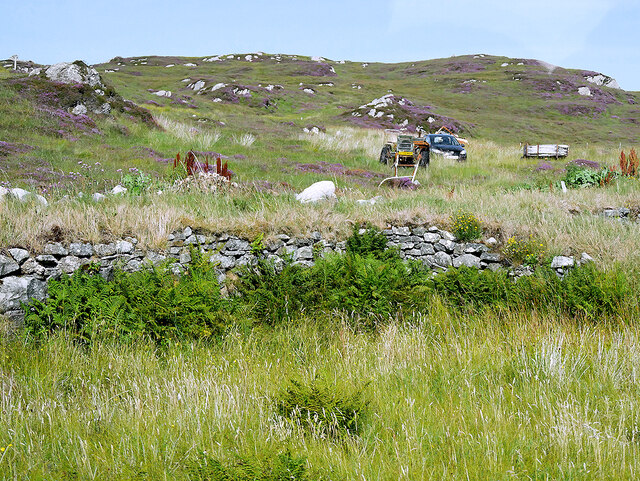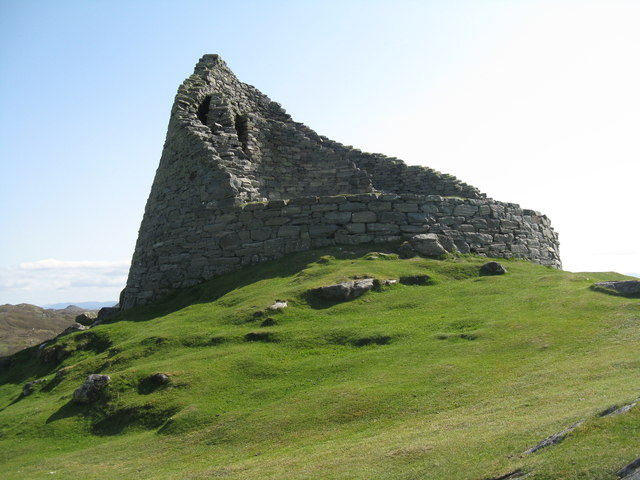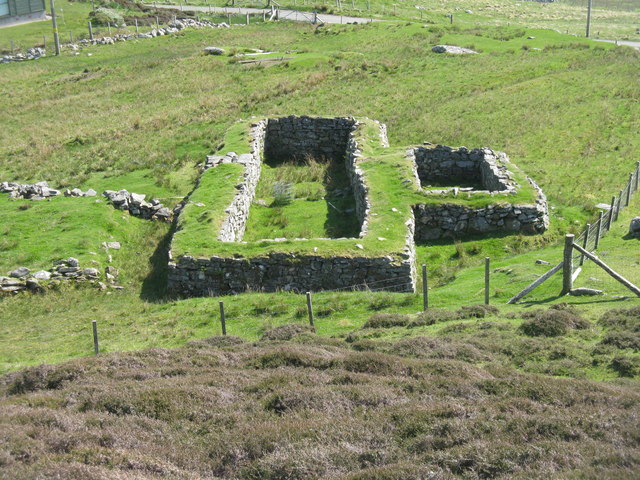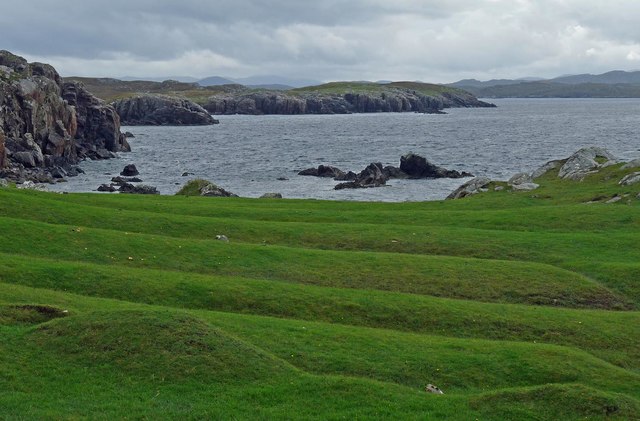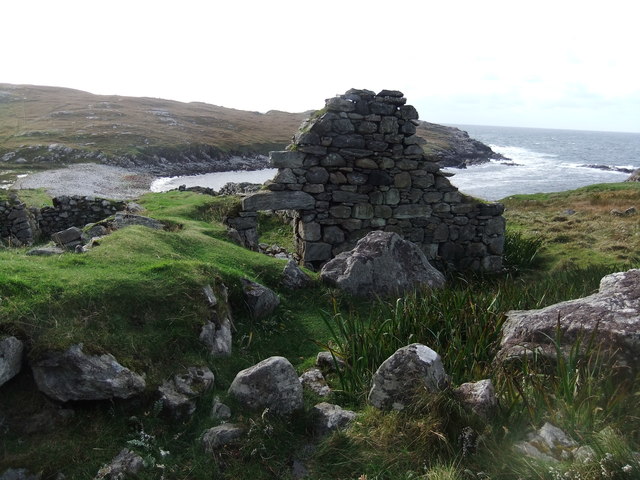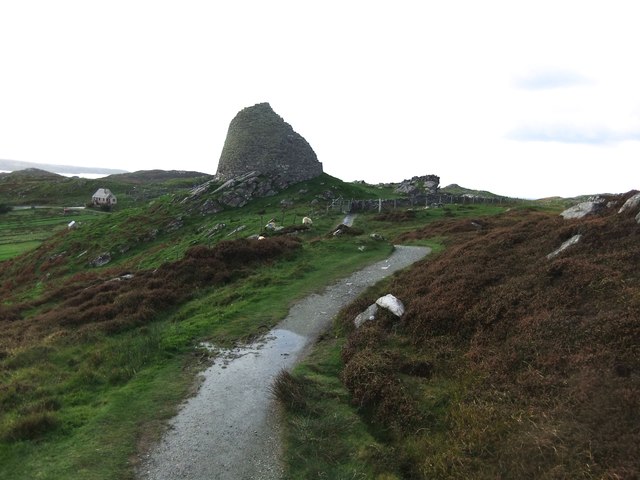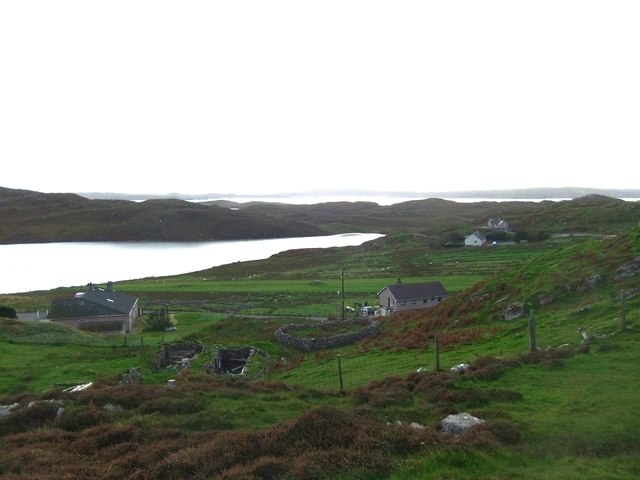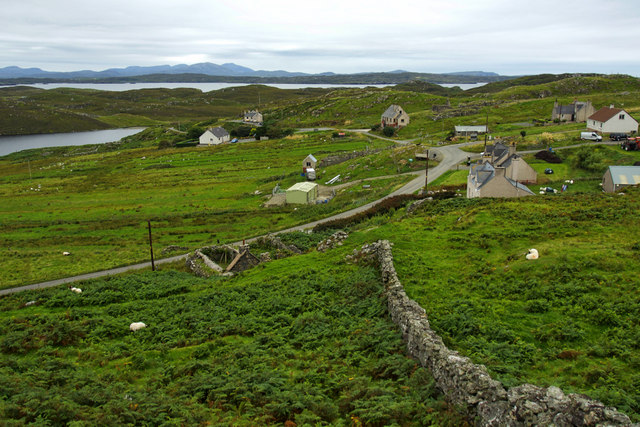Cnoc na h-Uathach
Hill, Mountain in Ross-shire
Scotland
Cnoc na h-Uathach
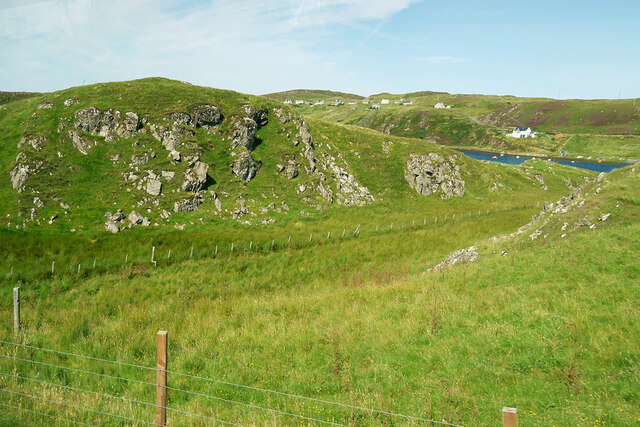
Cnoc na h-Uathach is a prominent hill located in Ross-shire, in the Highland region of Scotland. It stands at an elevation of approximately 584 meters (1,916 feet) above sea level. The hill is situated in a remote and rugged area, offering breathtaking views of the surrounding landscape.
Cnoc na h-Uathach is characterized by its steep slopes and rocky terrain. It is mainly composed of ancient Lewisian gneiss, a type of metamorphic rock that is over two billion years old. The hill's geology is of significant interest to geologists and hikers alike.
The hill is part of the expansive Ben Wyvis range, which is known for its diverse flora and fauna. At the lower slopes, you can find heather moorland and scattered birch trees. As you ascend, the vegetation changes to grasses and mosses, while the higher reaches of the hill are mostly covered in rugged rocks and scree.
Hiking enthusiasts are drawn to Cnoc na h-Uathach due to the challenging nature of its ascent. The hill offers several routes, varying in difficulty and length, catering to different skill levels. These routes provide stunning panoramic views of the surrounding mountains, including the nearby Ben Wyvis, and the sweeping landscapes of Ross-shire.
Cnoc na h-Uathach is a haven for outdoor enthusiasts, providing ample opportunities for hillwalking, hiking, and wildlife spotting. It is a cherished natural landmark in Ross-shire, attracting visitors who seek to immerse themselves in the untamed beauty of the Scottish Highlands.
If you have any feedback on the listing, please let us know in the comments section below.
Cnoc na h-Uathach Images
Images are sourced within 2km of 58.281222/-6.8120427 or Grid Reference NB1842. Thanks to Geograph Open Source API. All images are credited.
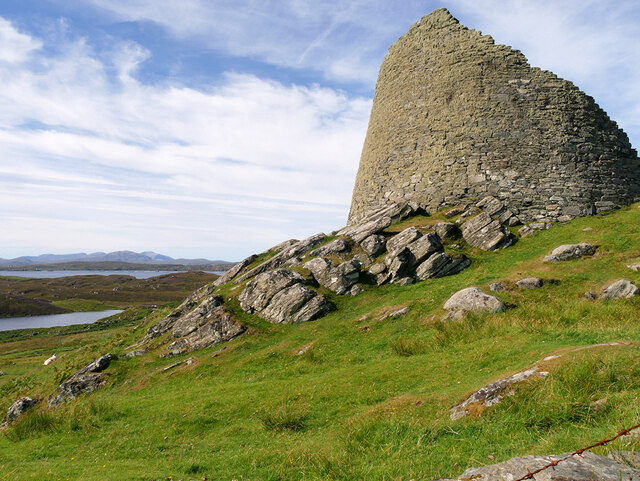
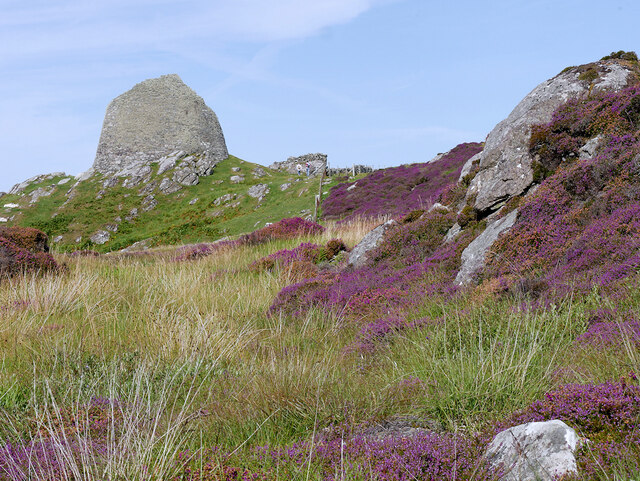
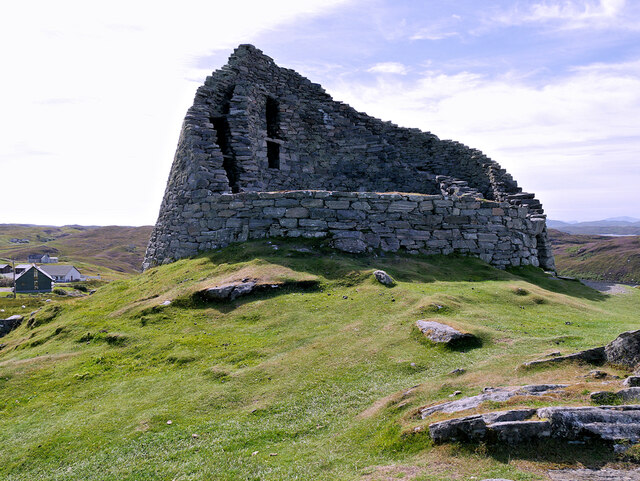
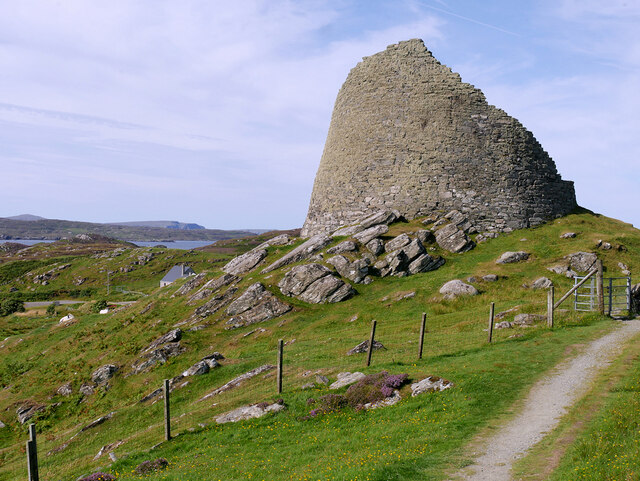
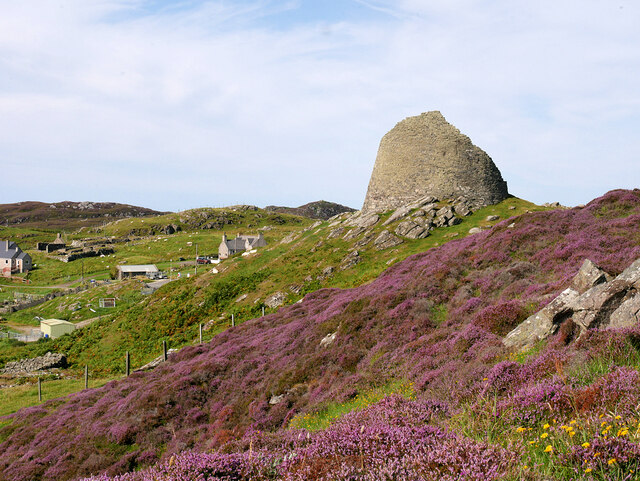
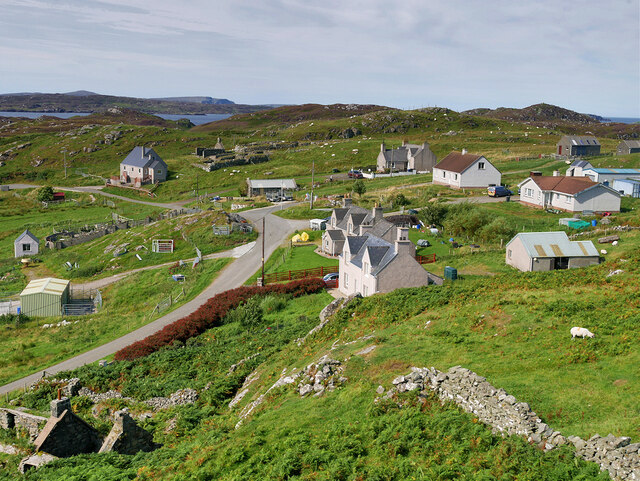
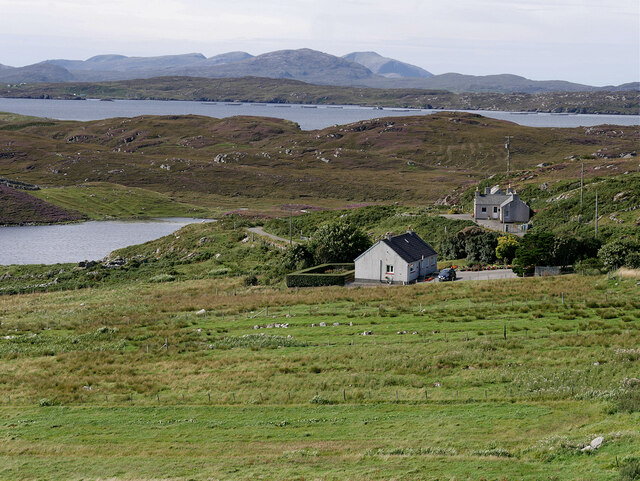
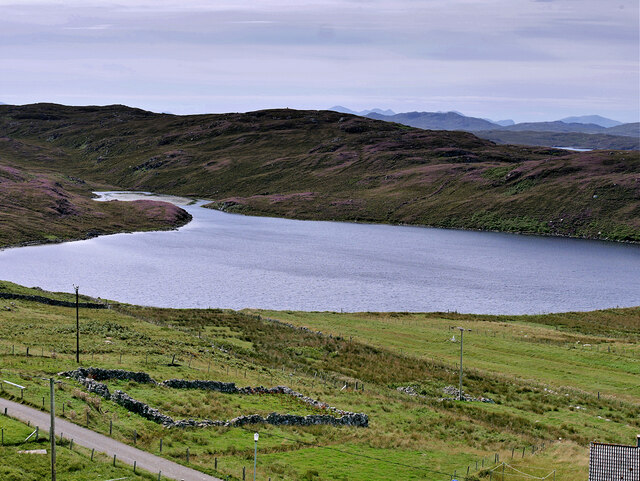
Cnoc na h-Uathach is located at Grid Ref: NB1842 (Lat: 58.281222, Lng: -6.8120427)
Unitary Authority: Na h-Eileanan an Iar
Police Authority: Highlands and Islands
What 3 Words
///irrigate.fragments.subsystem. Near Carloway, Na h-Eileanan Siar
Nearby Locations
Related Wikis
Borrowston, Lewis
Borrowston (Scottish Gaelic: Borghastan), with a population of about 50, is a crofting township situated on the Isle of Lewis, on the Outer Hebrides of...
Dun Carloway
Dun Carloway (Scottish Gaelic: Dùn Chàrlabhaigh) is a broch situated in the district of Carloway, on the west coast of the Isle of Lewis, Scotland (grid...
Garenin
Garenin (Scottish Gaelic: Na Gearrannan) is a crofting township on the west coast of the Isle of Lewis in the Outer Hebrides of Scotland. Garenin is in...
Carloway
Carloway (Scottish Gaelic: Càrlabhagh [ˈkʰaːɾɫ̪ə.ɤː]) is a crofting township and a district on the west coast of the Isle of Lewis, in the Outer Hebrides...
Cealasaigh
Cealasaigh or Kealasay is an islet in outer Loch Ròg, Lewis, Scotland that lies north of Traigh Mhór on Little Bernera and south of Campaigh. To the west...
Campaigh
Campaigh or Campay is a steep and rocky islet in outer Loch Ròg, Lewis, Scotland that lies north of Cealasaigh and Little Bernera. A huge natural arch...
Little Bernera
Little Bernera (Scottish Gaelic: Beàrnaraigh Beag) is a small island situated off the west coast of the Isle of Lewis in the Outer Hebrides.Little Bernera...
Tolsta Chaolais
Tolsta Chaolais (also Tolastadh Chaolais, Tolstadh a' Chaolais) is a village on the Isle of Lewis, Scotland. It consists of about forty houses, clustered...
Nearby Amenities
Located within 500m of 58.281222,-6.8120427Have you been to Cnoc na h-Uathach?
Leave your review of Cnoc na h-Uathach below (or comments, questions and feedback).
